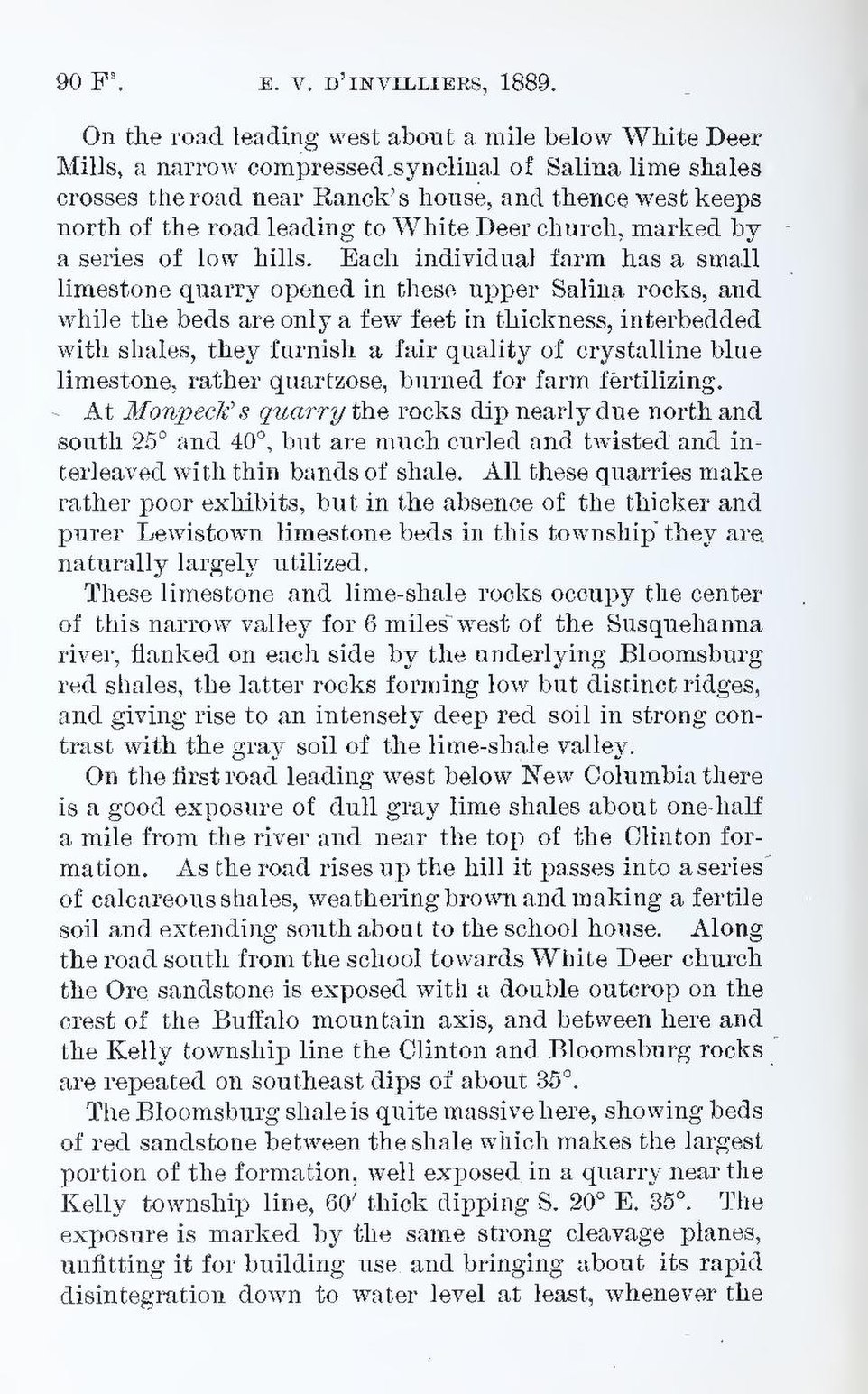On the road leading west about a mile below White Deer Mills, a narrow compressed synclinal of Salina lime shales crosses the road near Ranck’s house, and thence west keeps north of the road leading to White Deer church, marked by a series of low hills. Each individual farm has a small limestone quarry opened in these upper Salina rocks, and while the beds are only a few feet in thickness, interbedded with shales, they furnish a fair quality of crystalline blue limestone, rather quartzose, burned for farm fertilizing.
At Monpeck’s quarry the rocks dip nearly due north and south 25° and 40°, but are much curled and twisted and interleaved with thin bands of shale. All these quarries make rather poor exhibits, but in the absence of the thicker and purer Lewistown limestone beds in this township they are naturally largely utilized.
These limestone and lime-shale rocks occupy the center of this narrow valley for 6 miles west of the Susquehanna river, flanked on each side by the underlying Bloomsburg red shales, the latter rocks forming low but distinct ridges, and giving rise to an intensely deep red soil in strong contrast with the gray soil of the lime-shale valley.
On the first road leading west below New Columbia there is a good exposure of dull gray lime shales about one-half a mile from the river and near the top of the Clinton formation. As the road rises up the hill it passes into a series of calcareous shales, weathering brown and making a fertile soil and extending south about to the school house. Along the road south from the school towards While Deer church the Ore sandstone is exposed with a double outcrop on the crest of the Buffalo mountain axis, and between here and the Kelly township line the Clinton and Bloomsburg rocks are repeated on southeast dips of about 35°.
The Bloomsburg shale is quite massive here, showing beds of red sandstone between the shale which makes the largest portion of the formation, well exposed in a quarry near the Kelly township line, 60′ thick dipping S. 20° E. 35°. The exposure is marked by the same strong cleavage planes, unfitting it for building use and bringing about its rapid disintegration down to water level at least, whenever the
